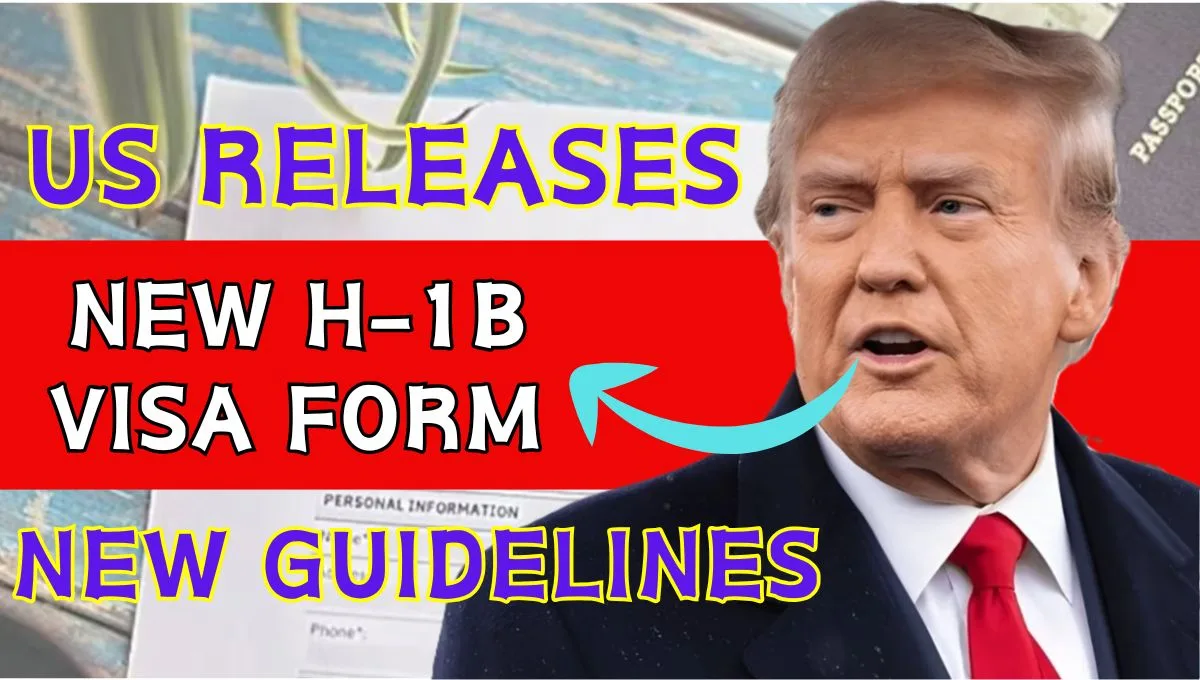US New H-1B Visa Form: You must adhere to updated filing requirements if you intend to work in the US in 2025 under the H-1B visa program. For positions categorized as “specialty occupations,” US organizations can temporarily employ foreign professionals under the H-1B non-immigrant visa category.
A bachelor’s degree or above (or an equivalent qualification) in a particular field is usually required for these positions. Jobs in technology, software development, engineering, healthcare, academia, education, and business and financial services are among the many occupations for which the visa is utilized.
Know about Form I-129
A crucial document for employment-based immigration to the US is Form I-129, also referred to as the Petition for a Non-immigrant Worker. This form is submitted to the U.S. Citizenship and Immigration Services (USCIS) by employers or potential employers in order to sponsor a non-immigrant worker for a particular employment-based visa category.
Form I-129, which will be revised and put into effect on January 17, 2025, is used to file H-1B petitions. With no grace period offered to guarantee the application of the final regulations, the revised Form I-129 will take the place of the one that was issued on April 1, 2024. As of January 17, 2025, petitions submitted using the previous version of the form will no longer be accepted by the USCIS.
Petitioners for a number of non-immigrant worker categories must use the updated Form I-129, including:
- H-1B, H-2A, H-2B, and H-3: Temporary workers/ trainees.
- L-1: Transferees within the company.
- O-1, O-2: People with exceptional skills and their helpers.
- P categories: Performers, sportsmen, and artists.
- Q-1, R-1: Visitors and religious workers engaging in cross-cultural interactions.
$1850 OAS Payment—Are You Eligible for OAS Pension | Monthly Boost in OAS Payments
Indians in the US to Get Automatic Work Permit for 540 Days Starting January
Candidates must take note of the following when mailing their paper I-129 form:
- The April 2024 version submitted to USCIS by January 17, 2025, will be accepted.
- If the candidate uses the outdated I-129 form on or after January 17, 2025, USCIS will reject it.
- Only after January 17, 2025, can candidates use the revised I-129.
- For each possible beneficiary, prospective petitioners must have to pay fee and register for the H-1B digitally.
- After a minimum of 14 days of registration, USCIS selects eligible beneficiaries through a selection process.
- H-1B cap-subject petitions can only be filed by those who have been chosen.
Important changes to H-1B visa rule & regulations
The H-1B modernization rule adds a number of improvements:
- Prior Deference for Extensions: By reintroducing the “prior deference” policy, USCIS streamlines and expedites the renewal process for H-1B visas that have already been granted.
- Definition of a Specialty Occupation: Degree fields must now directly correspond with job duties in order to meet eligibility requirements.
- Flexibility in Government and Non-profit Research: The scope of cap-exempt H-1B qualifications has been expanded to include research as a fundamental activity.
- Extensions of F-1 Student Visas:Automatic extensions for foreigner students transferring to H-1B visas.
- Entrepreneur Eligibility: H-1B visas are now available to startup founders who fulfill certain requirements.

